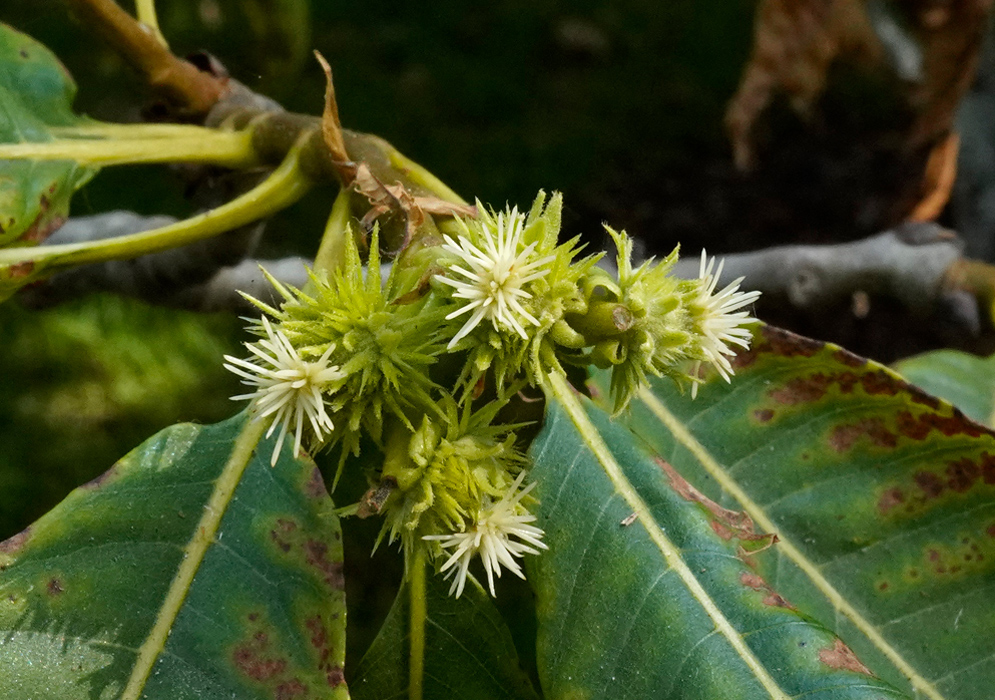This post has 11 Simple Fields-fields attached. Show fields.

Castanea sativa, commonly known as the sweet chestnut, is native to southern Europe and Asia Minor. It is a long-lived deciduous tree that can exceed 60 ft in height and has been cultivated for centuries both for its edible nuts and durable timber. Historical records confirm its introduction to Britain and other parts of northern Europe by the Romans, who valued it as a food source. The tree is now naturalized across a wide range, thriving particularly in mountainous areas with mild climates. The flowers appear in summer as dense catkins, producing clusters of spiky, star-shaped white blooms that are strongly scented and highly attractive to insects. The male flowers dominate these inflorescences, with female flowers developing at the base, later forming the characteristic spiny burs that enclose the nuts. Sweet chestnut has great economic significance: the nuts are roasted and eaten fresh, ground into flour, or used in confectionery. Beyond food, the timber is valued for furniture, barrels, and construction due to its strength and resistance to decay. Photographed in Peru.

